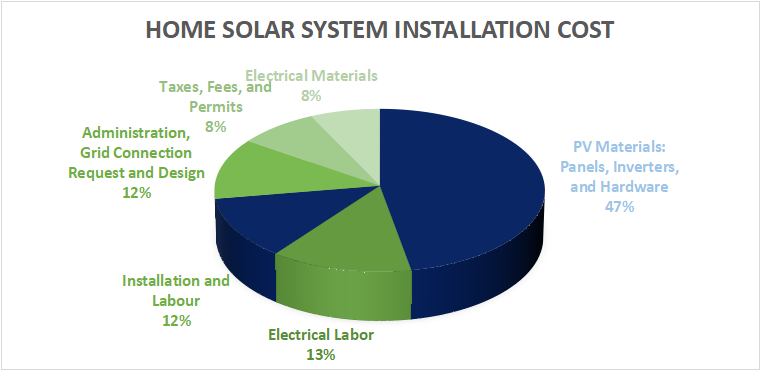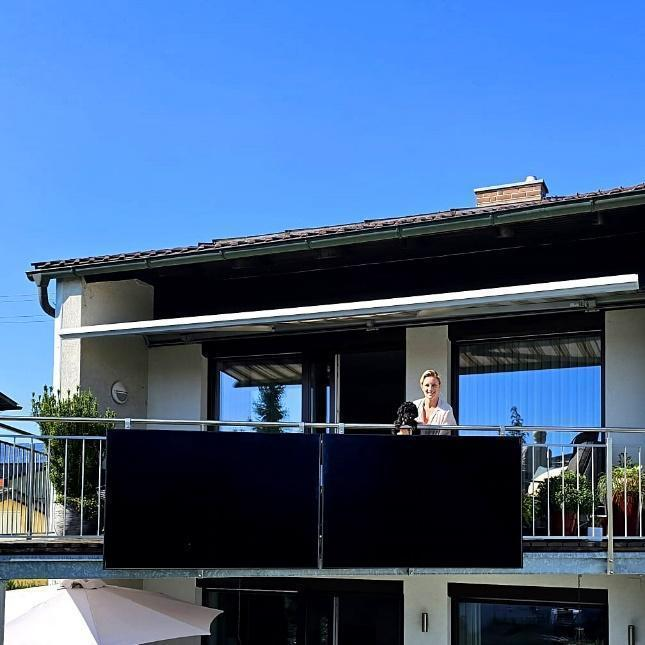Can Solar Energy Investment Go Well in 2024?
2024 is another promising year for significant growth in solar energy investment. With many countries headed for their net-zero emission goals, solar energy investment has a pivotal role in it. Just in 2022, 45% of total global electricity generation investment was related to solar PV. Therefore, 2024 is all set to dominate as another year for substantial solar energy investment.
Solar energy is not only the key to net-zero emission, but it also brings many other benefits, be it reducing the long-term cost of energy consumption or providing stable power support.
In short, solar energy investment in 2024 has a strong potential. Let’s dive deep into the solar energy market and talk in detail about the economics of solar energy to better understand the investment potential in 2024.
Solar Energy Market in 2024 & The Emerging Developments and Breakthroughs in Solar Technology
2024 will be another rollercoaster year for the solar energy market. The global market of solar energy investment was valued at $52.5 billion in 2018 and is set to reach about $223.3 billion by 2026, which is a 20.5% CAGR during 2019-2026. This reflects that the solar energy investment market will shine again in 2024.
However, renewable energy investors and developers are facing many hurdles to reach the expected growth levels. Some of those barriers include critical raw material access, investment in grid infrastructure, planning and permitting, access to capital, and much more. Therefore, there is a battle between more solar energy investment and barriers underway to unlock the full potential of renewable resources.
However, with many hinders ahead, emerging developments and breakthroughs are happening in solar and renewable technology, as follows:
1. Improved Efficiency
Increasing solar panels efficiency has been an ongoing study happening for the past many years. However, scientists have recently achieved a prominent breakthrough in solar panels efficiency via deploying the perovskite material (another semiconductor). When the perovskite layer is added on top of the silicon layer, scientists have seen the solar conversion efficiency to 30%. It is because silicon captures red light, while perovskite captures blue light, which leads to increased light capture.
2. Location
Solar energy investment is now going beyond lands to oceans. There are now an increasing number of floating solar farms installed worldwide, which is empowering countries to leverage the ocean surface to harness solar energy instead of just relying on the land surface.
3. Solar PV + Wind Power
Many companies are now testing to combine solar PV with wind power to have a consistent energy supply. In fact, Iberdrola, the Spanish energy giant, has already begun commissioning in Australia for a wind-solar hybrid project.
4. Solar and Storage
As battery technology is also improving gradually, companies are working on combining giant batteries with solar PV. This will increase the use case of solar PV and maximize the use of daytime solar energy.
Economics of Solar Energy
The ongoing solar energy investments and developments/breakthroughs are showing a promising future for solar technology. However, it is also important to understand the economics of solar energy to make the right investment decisions.
1. Cost Breakdown of Solar Energy
When deploying solar power for home, there are two main cost factors to consider:
Installation Costs
- Purchasing PV System:The cost of purchasing solar panels, solar inverters, batteries, mounting hardware, and other electrical components.
- Installation Cost: The cost of hiring professionals to install the solar system.
- Inspection Cost:The cost involved in permit/inspection as per local regulations.
Maintenance Costs
- Repairs: The cost of handling components repair.
- Cleaning:The cost of keeping panels clean.
According to Solar Action Alliance, the average household solar system installation fees and the makeup are:
Solar System Size | Average System Cost |
5kW (Approx. 1500 Sq Ft Home) | $10,750 |
10 kW (Approx. 3000 Sq Ft Home) | $21,500 |
15 kW (Approx. 4500 Sq Ft Home) | $32,250 |

2. ROI from Solar Energy Investment
The Return on Investment (ROI) from solar energy investment depends on the system size, location, and government incentives.
On average, the ROI on solar energy investment is 10% in the United States. The average household with a whole-house solar system can save up to $1,500 per year and get a complete payoff in 8-13 years.
3. Case Study of Successful Solar Investments
Background
Meet the Schmiedseder family, a lively bunch spanning three generations living under one roof. They wanted to embrace solar energy to cut costs and reduce their environmental impact. However, with limited roof space already occupied by solar panels, they needed an innovative solution to power the upper floors, especially for the grandparents.
Solution
Enter Die Digitalagentur with a game-changing idea: the Balkony, a sleek balcony-based solar power station. This solution offered several advantages. It was cost-effective, blending seamlessly with the home’s aesthetics. Installation was a breeze, taking less than 15 minutes and requiring no specialized labor.
Plus, with Hoymiles’ cutting-edge technology, monitoring energy production became simple via the S-Cloud app. The Balcony promised not just convenience, but durability, with robust components and weatherproof design ensuring long-term performance.
Outcome
Thanks to the Balkony, the Schmiedseders began reaping the rewards of solar energy without hassle. With savings of up to €400 annually, they not only reduced their electricity bills but also contributed to a greener planet. The family enjoyed peace of mind, knowing they had made a sustainable investment that would benefit them for years to come.
4. Government Policies Support and the Impact on Solar Investment ROI
Governments across the world are introducing solar energy investment policies to encourage their citizens to deploy solar systems in their houses. For instance, the U.S. government offers solar tax credits that help to recoup up to 30% of the cost involved in setting up a whole-house solar system. Similarly, the net metering policy empowers you to sell excess electricity back to the grid.
The government policies also facilitate faster ROI on solar energy investment. The solar tax credits, state/local incentives, net metering, and similar policies lower the financial burden of setting up solar systems and complete 100% return on investment in a reduced period.
Risks and Challenges in Solar Energy Investments
Solar energy investment looks all exciting and promising, but it also comes with some risks and challenges, as follows:
- Regulatory and policy risks
- Technological risks
- Price volatility
- Weather dependency
- Maintenance and repairs
- Grid integration complications
- Infrastructure challenges
- Environmental and social risks
Although solar energy investment comes with the above risks and challenges, it is still a preferred investment over other renewable energy investments due to declining costs, technological advancements, and new friendly policies.
Wrapping Up
Since the stats of solar energy investment have been increasing for the past few years, the same trend is projected for 2024. Considering the benefits and ROI of the solar system, it is worth investing in 2024 to have reliable solar power for your home. However, it is important to choose the best components for long-lasting performance. That’s where Hoymiles comes into play.
As the dominant player in module-level power electronics solutions, Hoymiles offers tailored solar solutions with highly efficient products, like 4-in-1 microinverters, data transfer units (DTUs), energy storage solutions, and much more. So, check out Hoymiles’ top-notch offerings and find the best solar solutions.

